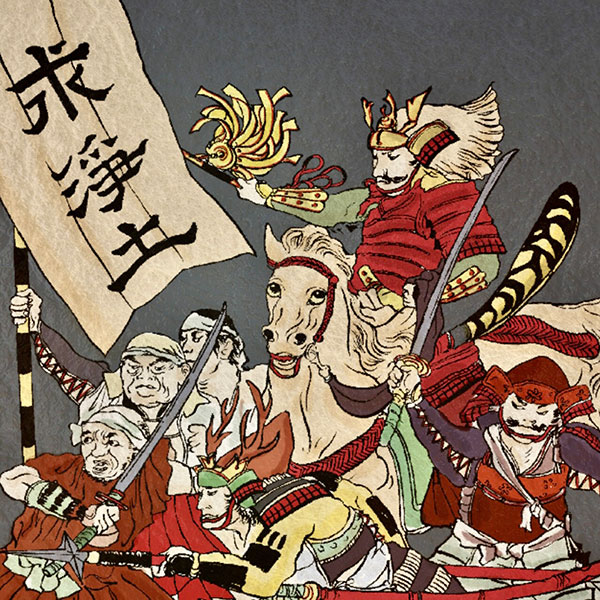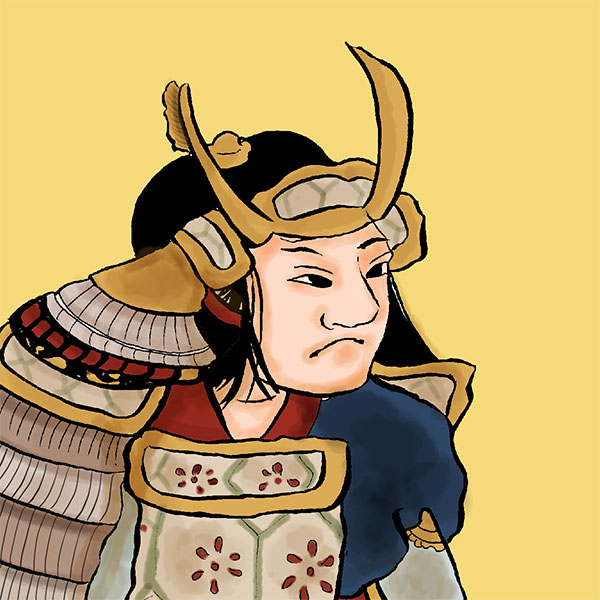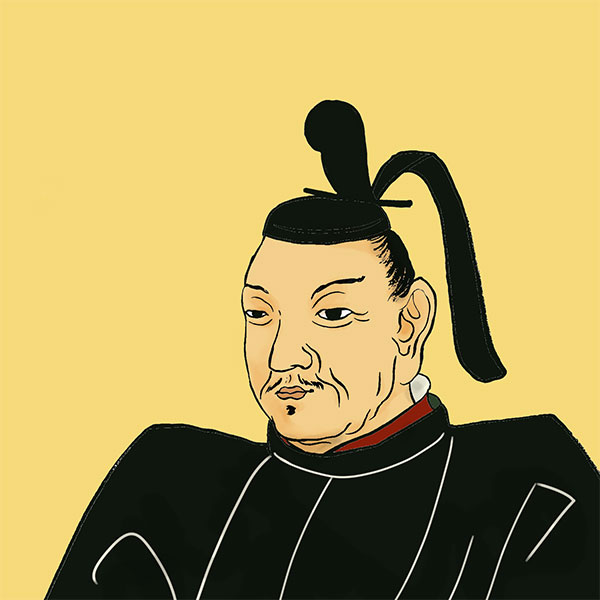Mikawa Ikko Ikki (1/2)The vassals split! Ieyasu is in big trouble

Mikawa Ikko Ikki
- Article category
- case file
- Incident name
- Mikawa Ikko Ikki (1563-1564)
- place
- Aichi prefecture
- Related castles

Okazaki Castle

Nishio Castle
- people involved
Various crises befell Tokugawa Ieyasu until he won the Battle of Sekigahara and unified the country. The three crises in his life are the Battle of Mikatagahara and the crossing of the god Iga. This time we will introduce the Mikawa Ikko Ikki, which took place in Mikawa Province (present-day Aichi Prefecture), the stronghold of Ieyasu, from the fall of 1563 to early spring of the following year. Oda Nobunaga often had trouble with the Ikko Ikki, which was started by followers of the Ikko sect, and this time it even led to the division of the Tokugawa family's vassals. This time we will take a closer look at the Mikawa Ikko Ikki, which is said to be the biggest crisis for young Ieyasu.
What is Ikko Ikki?
Before getting into Mikawa Ikko Ikki, let's first confirm what Ikko Ikki is. The Ikko Ikki was a rebellion started by followers of the Jodo Shinshu Honganji Sect (Ikko Sect). An uprising is a concerted action by a group of like-minded people, and by extension it refers to a resistance movement that involves the use of force against those in power.
Jodo Shinshu is a religion founded by Shinran in the early Kamakura period, and simply put, it is a teaching that aims for rebirth in the Pure Land by reciting the Nembutsu and believing in Amida Buddha. The Ikko sect has been popular among the common people since the Kamakura period because its content is easy to understand and anyone can join. The people of the Ikko sect first staged an uprising in 1466, at the Battle of Kanamori in Kanamori (Moriyama City, Shiga Prefecture), which was caused by a religious conflict with Enryakuji Temple on Mt. Hiei. After that, people of the Ikko sect started uprisings in various places to protect their religious autonomy.
A famous one is the Kaga Ikko Ikki, which occurred in 1488. Approximately 200,000 Ikki rebels rose up against the suppression of the Ikko sect by Togashi Masachika, the shugo daimyo of Kaga Province (Ishikawa Prefecture). In the first place, Masachika enlisted the help of the Ikko sect and became a shugo daimyo in order to defeat the opposing forces. However, he felt a sense of crisis due to the expansion of power of the Ikko sect, and this time he turned to the side of suppressing the Ikko sect. As a result of the Kaga Ikko Ikki, Masachika was cornered by the Ikko sect and committed suicide. The Kaga Ikko Ikki continued to rule Kaga Province for about 100 years until it was destroyed by Nobunaga in 1580. It is said that permission for the Ikko Ikki was required even when the shogunate collected taxes. For this reason, Kaga came to be called ``the land of peasants''.
The Ikkoshu had a wide range of followers, from samurai to farmers, and had a huge military force. Furthermore, since believing in Amida Buddha meant that one could go to the Pure Land, they would charge without fear of death during battles, making them unpleasant opponents for Sengoku period warlords. During the Battle of Ishiyama, where Oda Nobunaga fought against Ishiyama Honganji Temple, Nobunaga had a tough time against the followers of the Ikko sect. The Battle of Ishiyama was difficult to reach a conclusion, and lasted for about 11 years from 1570 to 1580.
The Ikko sect has been believed in Mikawa since the Kamakura period, and Shinran also visited Mikawa to preach. During the Muromachi period, Rennyo, the 8th head of Honganji Temple, the founder of the Ikko sect, built Honshu Temple in Toro (Okazaki City, Aichi Prefecture) as a center for strengthening the Nishi-Mikawa River. The Ikko sect is easy to understand, and the number of followers is rapidly increasing.
During the Sengoku period, in addition to the Honshu-ji Temple, the Mikawa Ikko sect was supervised by the ``Mikawa Sanka-temples,'' which included Honsho-ji (Anjo City, Aichi Prefecture), Katsuki-ji Temple, and Jogu-ji Temple (both in Okazaki City, Aichi Prefecture). It looked like this. Many of Ieyasu's vassals also belonged to this Ikko sect, and for this reason, during uprisings, some defected from among the vassals.
Mikawa Ikko Ikki ① Why did the Ikko uprising occur?
In 1563, when the Mikawa Ikko Ikki occurred, Tokugawa Ieyasu (then Matsudaira Ieyasu) was only 22 years old. After Oda Nobunaga defeated Yoshimoto Imagawa at the Battle of Okehazama in May 1560, he became independent from the Imagawa clan, formed the Kiyosu Alliance with Nobunaga, and began working toward the unification of Mikawa Province. I did.
Meanwhile, trouble arises between Ieyasu and the Ikko sect temple over the temple's ``right of non-entry.'' The right of non-entry is the right to refuse the intervention of the feudal lord, and refers to exemption from annual tax and various duties, non-intervention of the police, etc. Ieyasu's father, Hirotada Matsudaira, gave it to Ikko sect temples such as Honshuji Temple and Mikawa Sankaji Temple, but it was nothing more than a hindrance to Ieyasu's aim of unifying Mikawa.
There are various theories about the troubles surrounding the right of non-entry that led to the Mikawa Ikko Ikki. In fact, there are almost no documents left regarding the Mikawa Ikko Ikki, and we have to rely on documents from the Edo period, so we don't really know the exact details.
According to Mikawa Monogatari, written in the early Edo period, an outlaw invaded Honsho-ji Temple in 1562 and was captured by Masachika Sakai, a vassal of Ieyasu. It is said that Honshoji Temple was angry that its right to not enter was violated, which led to the uprising. There is a description in "Matsudaira Ki" and other documents that the cause was that Ieyasu's vassals forcibly collected rice from Jogu-ji Temple. There is also a theory that the cause of the Mikawa Ikko Ikki has not been clearly identified, as there is also a theory that Ieyasu's attempt to intervene in water transportation and commerce owned by temples was the trigger. However, Ieyasu, who was promoting the unification of Mikawa, was putting effort into procuring supplies and seems to have had an eye on collecting annual tax from temples, so it seems certain that there was some kind of movement from Ieyasu's side.
Mikawa Ikko Ikki ② Division of Tokugawa vassals
The Ikko sect of Mikawa was angered by Tokugawa Ieyasu's actions and began preparing for an uprising. Kusei, the tenth head of Honshoji Temple, took the lead and summoned the disciples of the three temples. A group of uprisings numbering in the thousands gathered. Among them were military commanders from the vassals, including Moritsuna Watanabe and Sadatsugu Hachiya, later members of the 16 Tokugawa Generals, who died in Ieyasu's place at the Battle of Mikatagahara in 1572. Masanobu Honda, who served the Matsudaira family from the time of Natsume Yoshinobu and Ieyasu's grandfather and is known as one of Ieyasu's senior vassals, was also there.
- people involved

- WriterNaoko Kurimoto(Writer)I am a former travel industry magazine reporter. I have loved history, both Japanese and world history, since I was a child. I usually enjoy visiting temples and shrines, especially shrines, and often do ``pilgrimages to sacred places'' themed around historical figures. My favorite military commander is Ishida Mitsunari, my favorite castle is Kumamoto Castle, and my favorite castle ruins is Hagi Castle. My heart flutters when I see the ruins of battle castles and the stone walls of castle ruins.







